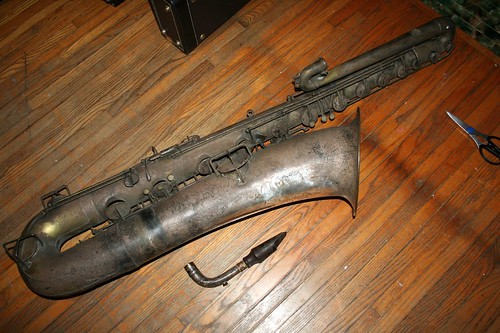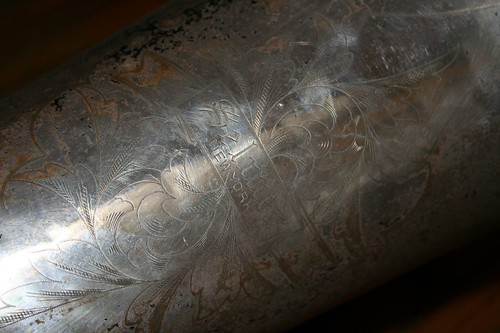Ordinarily, I don't recommend domed resos on 1920s horns, because resonators like those didn't exist in the 1920s. Remember, a domed resonator makes an open key behave as though the key height had been lowered a bit. More importantly, a domed resonator actually changes the shape of the bore when installed on a key that is closed at rest. it makes the bore smaller, which is the last thing you want. Smaller bore = flatter pitch at that point in the horn, and these old basses tend to be on the flat side anyway. To their credit, Bueschers have better pitch up in the palm keys.
In the real world, big saxes are not as sensitive to resonator shapes as little ones. However, if it were my horn, I'd use flat resonators. If you want loud and bright, use big ones, and if you want dark (legit), use small ones. The term "flat resonators" is relative. on my own Conn stencil, I used standard plastic resonators, the biggest I could find, and the horn played great, loud and powerful. Those resonators were not flat, but they were not domed much, either. The closest thing to Buescher snaps is Prestini metal resonators without rivets. They (and the old Buescher snaps) were about the same shape as standard plastic resonators, but a little smaller.
I recently sold a wonderful Conn stencil with NO resonators. Not as loud, but it had its own charm and pitch was good. I don't think there is a big difference between metal and plastic resonators.




